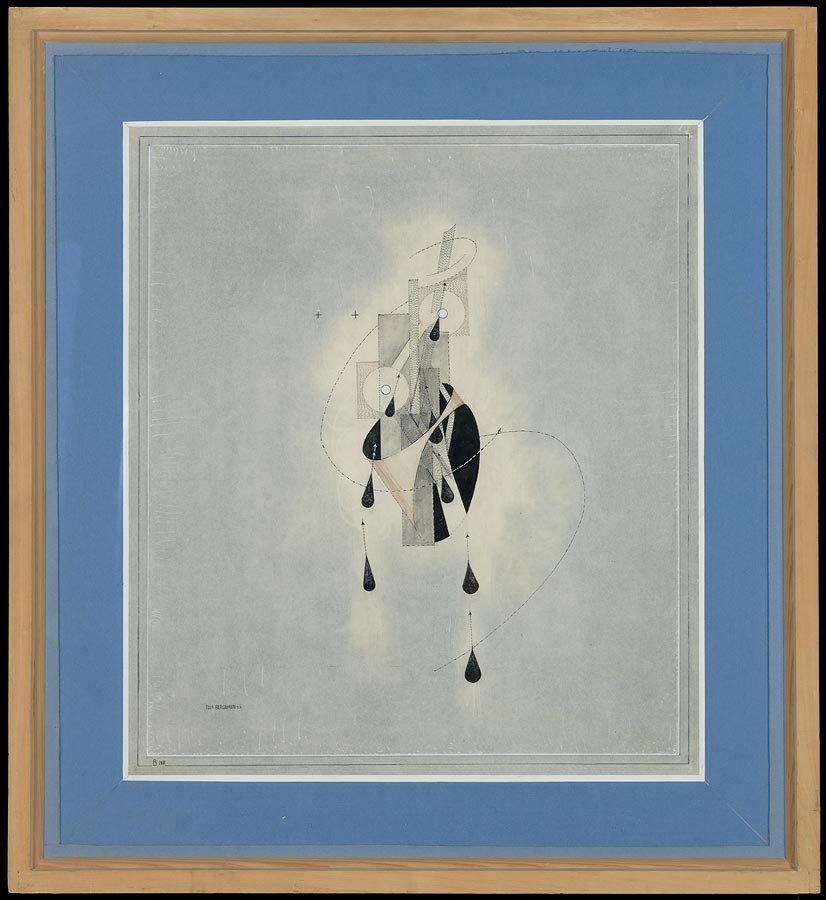| Maker(s): | Bergmann-Michel, Ella | | Culture: | German (1896 - 1971)
| | Title: | Der Steigende Tropfen
| | Date Made: | 1923
| | Type: | Drawing
| | Materials: | India ink and graphite on paper
| | Place Made: | Germany
| | Measurements: | sheet: 29 1/2 in x 26 3/4 in; 74.93 cm x 67.945 cm
| | Narrative Inscription: | signature, date and inscription in black ink at lower left: ELLA BERGMANN 23 / B 148, signature, date, title and inscription on verso: Ella BERGMANN.1923. "steingende Tropfen" [underlined] Tusche + Graphit, rückseitig . hoch: 75,0, o briet: 68.o cm.
| | Accession Number: | SC 2008.13
| | Credit Line: | Purchased
| | Museum Collection: | Smith College Museum of Art
|
|

|
Description:
abstract, tear-drop shapes, squared circles and arcing dotted lines in center of greyish sheet of paper
Label Text:
The daughter of a pharmacist from Paderborn, Germany, Ella Bergman studied art in 1915 in the city of Weimar. While it was a destination for many artists, Weimar was also still grappling with the after effects of World War I, which clearly had a lasting impact on Bergmann’s work as an artist. During her studies at the art academy, Bergmann met and married the artist Robert Michel, who she would also work with throughout her life.. Ella was often praised as the “better” artist.
Clearly influenced by the major German and Russian modernist art movements of the time, Bergmann’s work exhibits a real interest in the coexistence, and often somewhat fraught relationship, between nature and technology. Der Steigende Tropfen (The Rising Drops) is part of a series of works from the twenties in which she created techno-organisms, or living machines. In the case of Der Steigende Tropfen, the natural process of falling water is reversed, as the title suggests. This conscious reversal of the natural world can also be read as a socio-political metaphor for a society gone terribly awry. At this point in time, Bergmann had left the city for a more rural life in Taunus, a place which became a refuge during World War II. In 1933 Bergmann’s art was identified as “Degenerate” by the ruling Nazi party, a classification intended to persecute artists who visually challenged the Nazi’s controlled perception of the world. (hkdv)
Tags:
abstract Subjects:
Art, Abstract; Graphite Link to share this object record:
https://museums.fivecolleges.edu/detail.php?t=objects&type=ext&id_number=SC+2008.13 |